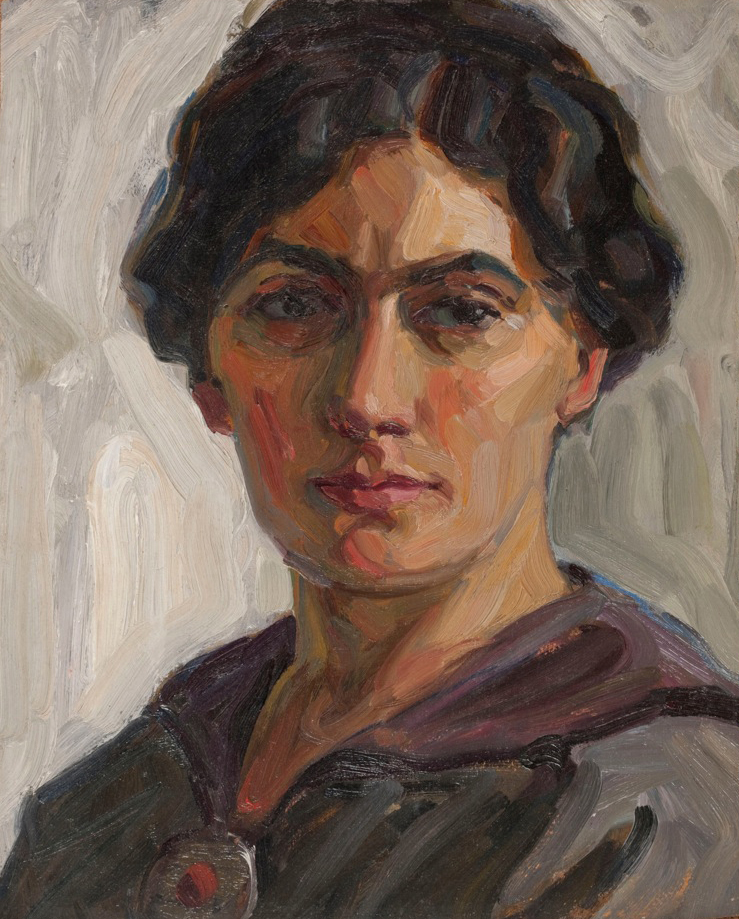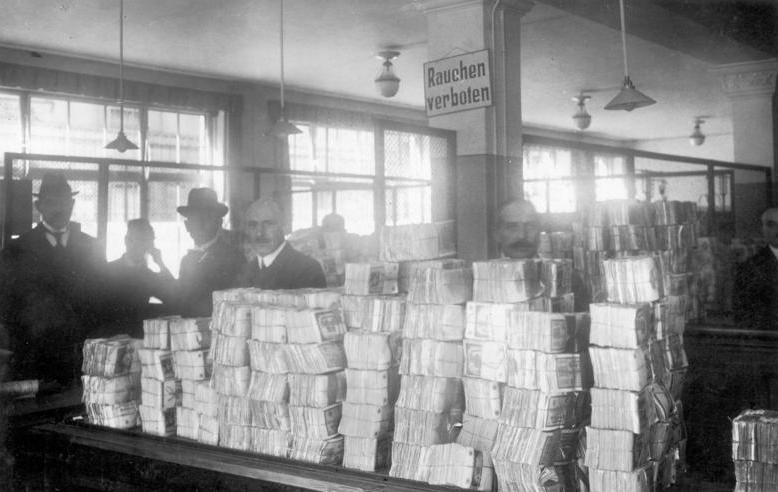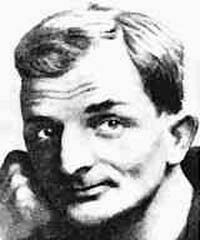|
Selma Des Coudres
Selma Des Coudres (born Selma Plawneek ( lv, Zelma Pļavniece); 2 January 1883, Riga — 4 March 1956, Fürstenfeldbruck) was a Latvian-born German painter. Her style mixes elements of Art Nouveau, Expressionism and Japonism. Biography Her father was a wood and lumber wholesaler. He died in 1891, shortly after a disastrous fire destroyed all his possessions. Her mother had received drawing lessons as a girl, and encouraged Selma in her plans to become an artist.Eva von Seckendorff: "Selma Des Coudres, geb. Plawneek – Eine Malerin zwischen Riga und Fürstenfeldbruck". In: Angelika Mundorff, Eva von Seckendorff (Eds.): ''Selma und Adolf Des Coudres. Ein ungleiches Künstlerpaar.'' Exhibition catalog, Museum Fürstenfeldbruck, 2014 . She enrolled in the private painting school operated by the Baltic German painter, Elise Jung-Stilling. In 1903, the Imperial Academy of Arts awarded her a diploma that enabled her to become a teacher in a middle school for girls. While teaching, she ... [...More Info...] [...Related Items...] OR: [Wikipedia] [Google] [Baidu] |
Selbstportrait Selma Des Coudres
''Selbstportrait'' is the third solo album by German keyboardist Hans-Joachim Roedelius, best known for his work with Cluster, Harmonia, and Aquarello. The title is German for "Self Portrait", a title meant to reflect the gentle, introspective nature of the ambient and new-age music of the album. The original Sky Records release was subtitled ''Teil 1 Sanfte Musik'', German for "Part 1, Soft Music." ''Selbstportrait'' was recorded by Roedelius at his home in Forst, in the Weser Uplands of West Germany between various Cluster sessions from 1973 until 1977 on his ReVox A77 reel to reel. The music actually predates the two previously released solo albums: ''Durch Die Wüste'' and ''Jardin Au Fou''. The final mix was completed at Gorilla Studio in Vienna, Austria at the end of April, 1979, with the exception of "Prinzregent" which was edited in Conny's Studio (owned by Conny Plank) in 1976. ''Selbstportrait'' was originally released by Sky Records in 1979. Phillipe Blache, writin ... [...More Info...] [...Related Items...] OR: [Wikipedia] [Google] [Baidu] |
Dachau Art Colony
The Dachau Artists' Colony was located in Dachau, Germany, and flourished from around 1890 until 1914. History In the early 19th century, the then-bucolic village of Dachau (located just 12 miles from Munich) began attracting landscape painters. By the second half of the century, Barbizon-influenced painters like Carl Spitzweg and Christian Morgenstern, and academic painters like Wilhelm von Diez and Eduard Schleich the Elder had worked in and around Dachau. A new era opened in 1888 when the German painter Adolf Hölzel moved to Dachau. In 1897 he and several other avant-garde artists — notably Ludwig Dill and Arthur Langhammer — set up the "New Dachau" art school in Dachau that attracted artists from all over Europe, especially rural genre painters, landscape painters, and printmakers. Many stayed and formed a colony, drawn both by the picturesque surrounding moors stretching to the distant Alps and by the lower cost of living than in nearby Munich. Among those drawn to th ... [...More Info...] [...Related Items...] OR: [Wikipedia] [Google] [Baidu] |
German Women Painters
German(s) may refer to: * Germany (of or related to) **Germania (historical use) * Germans, citizens of Germany, people of German ancestry, or native speakers of the German language ** For citizens of Germany, see also German nationality law **Germanic peoples (Roman times) * German language **any of the Germanic languages * German cuisine, traditional foods of Germany People * German (given name) * German (surname) * Germán, a Spanish name Places * German (parish), Isle of Man * German, Albania, or Gërmej * German, Bulgaria * German, Iran * German, North Macedonia * German, New York, U.S. * Agios Germanos, Greece Other uses * German (mythology), a South Slavic mythological being * Germans (band), a Canadian rock band * "German" (song), a 2019 song by No Money Enterprise * ''The German'', a 2008 short film * "The Germans", an episode of ''Fawlty Towers'' * ''The German'', a nickname for Congolese rebel André Kisase Ngandu See also * Germanic (other) * Germa ... [...More Info...] [...Related Items...] OR: [Wikipedia] [Google] [Baidu] |
1956 Deaths
Events January * January 1 – The Anglo-Egyptian Sudan, Anglo-Egyptian Condominium ends in Sudan. * January 8 – Operation Auca: Five U.S. evangelical Christian Missionary, missionaries, Nate Saint, Roger Youderian, Ed McCully, Jim Elliot and Pete Fleming, are killed for trespassing by the Huaorani people of Ecuador, shortly after making contact with them. * January 16 – Egyptian leader Gamal Abdel Nasser vows to reconquer Palestine (region), Palestine. * January 25–January 26, 26 – Finnish troops reoccupy Porkkala, after Soviet Union, Soviet troops vacate its military base. Civilians can return February 4. * January 26 – The 1956 Winter Olympics open in Cortina d'Ampezzo, Italy. February * February 11 – British Espionage, spies Guy Burgess and Donald Maclean (spy), Donald Maclean resurface in the Soviet Union, after being missing for 5 years. * February 14–February 25, 25 – The 20th Congress of the Communist Party of the Soviet Union is held in Mosc ... [...More Info...] [...Related Items...] OR: [Wikipedia] [Google] [Baidu] |
1883 Births
Events January–March * January 4 – ''Life'' magazine is founded in Los Angeles, California, United States. * January 10 – A fire at the Newhall Hotel in Milwaukee, Wisconsin, United States, kills 73 people. * January 16 – The Pendleton Civil Service Reform Act, establishing the United States civil service, is passed. * January 19 – The first electric lighting system employing overhead wires begins service in Roselle, New Jersey, United States, installed by Thomas Edison. * February – ''The Adventures of Pinocchio'' by Carlo Collodi is first published complete in book form, in Italy. * February 15 – Tokyo Electrical Lightning Grid, predecessor of Tokyo Electrical Power (TEPCO), one of the largest electrical grids in Asia and the world, is founded in Japan. * February 16 – The '' Ladies' Home Journal'' is published for the first time, in the United States. * February 23 – Alabama becomes the first U.S. stat ... [...More Info...] [...Related Items...] OR: [Wikipedia] [Google] [Baidu] |
Emmering, Fürstenfeldbruck
Emmering is a municipality in the district of Fürstenfeldbruck in Bavaria in Germany Germany,, officially the Federal Republic of Germany, is a country in Central Europe. It is the second most populous country in Europe after Russia, and the most populous member state of the European Union. Germany is situated betwe .... References Fürstenfeldbruck (district) {{Fürstenfeldbruck-geo-stub ... [...More Info...] [...Related Items...] OR: [Wikipedia] [Google] [Baidu] |
Still-life
A still life (plural: still lifes) is a work of art depicting mostly inanimate subject matter, typically commonplace objects which are either natural (food, flowers, dead animals, plants, rocks, shells, etc.) or man-made (drinking glasses, books, vases, jewelry, coins, pipes, etc.). With origins in the Middle Ages and Ancient Greco-Roman art, still-life painting emerged as a distinct genre and professional specialization in Western painting by the late 16th century, and has remained significant since then. One advantage of the still-life artform is that it allows an artist much freedom to experiment with the arrangement of elements within a composition of a painting. Still life, as a particular genre, began with Netherlandish painting of the 16th and 17th centuries, and the English term ''still life'' derives from the Dutch word ''stilleven''. Early still-life paintings, particularly before 1700, often contained religious and allegorical symbolism relating to the objects dep ... [...More Info...] [...Related Items...] OR: [Wikipedia] [Google] [Baidu] |
Hyperinflation In The Weimar Republic
Hyperinflation affected the German Papiermark, the currency of the Weimar Republic, between 1921 and 1923, primarily in 1923. It caused considerable internal political instability in the country, the occupation of the Ruhr by France and Belgium, and misery for the general populace. Background To pay for the large costs of the ongoing First World War, Germany suspended the gold standard (the convertibility of its currency to gold) when the war broke out. Unlike France, which imposed its first income tax to pay for the war, German Emperor Wilhelm II and the Reichstag decided unanimously to fund the war entirely by borrowing. The government believed that it would be able to pay off the debt by winning the war and imposing war reparations on the defeated Allies. This was to be done by annexing resource-rich industrial territory in the west and east and imposing cash payments to Germany, similar to the French indemnity that followed German victory over France in 1870.Evans, p. 103 ... [...More Info...] [...Related Items...] OR: [Wikipedia] [Google] [Baidu] |
Adolf Des Coudres Schlafend
Adolf (also spelt Adolph or Adolphe, Adolfo and when Latinised Adolphus) is a given name used in German-speaking countries, Scandinavia, the Netherlands and Flanders, France, Italy, Spain, Portugal, Latin America and to a lesser extent in various Central European and East European countries with non-Germanic languages, such as Lithuanian Adolfas and Latvian Ādolfs. Adolphus can also appear as a surname, as in John Adolphus, the English historian. The female forms Adolphine and Adolpha are far more rare than the male names. The name is a compound derived from the Old High German ''Athalwolf'' (or ''Hadulf''), a composition of ''athal'', or ''adal'', meaning "noble" (or '' had(u)''-, meaning "battle, combat"), and ''wolf''. The name is cognate to the Anglo-Saxon name '' Æthelwulf'' (also Eadulf or Eadwulf). The name can also be derived from the ancient Germanic elements "Wald" meaning "power", "brightness" and wolf (Waldwulf). Due to negative associations with Adolf Hitler ... [...More Info...] [...Related Items...] OR: [Wikipedia] [Google] [Baidu] |
Adolf Des Coudres
Adolf Des Coudres (2 June 1862, Karlsruhe - 21 September 1924, Fürstenfeldbruck) was a German landscape painter. Biography The Des Coudres family originated in Switzerland. His father was Ludwig des Coudres, a painter and Professor at the Academy of Fine Arts, Karlsruhe.Angelika Mundorff: ''Adolf Des Coudres (1862-1924). Akademischer Maler und Familienmensch'' In: Angelika Mundorff, Eva von Seckendorff (Eds.): ''Selma und Adolf Des Coudres. Ein ungleiches Künstlerpaar.'' Exhibition catalog, Museum Fürstenfeldbruck, 2014 . Despite this, he did not support his son's desire to become a painter. It was only after his father's death in 1878 that he was able to begin his studies.Letter from Selma to Hans Peter Des Coudres, 5 April 1955, Private collection. ... [...More Info...] [...Related Items...] OR: [Wikipedia] [Google] [Baidu] |
Joachim Ringelnatz
Joachim Ringelnatz is the pen name of the German author and painter Hans Bötticher (7 August 1883, Wurzen, Saxony – 17 November 1934, Berlin). His pen name ''Ringelnatz'' is usually explained as a dialect expression for an animal, possibly a variant of ''Ringelnatter'', German for grass snake or more probably the seahorse for winding ("ringeln") its tail around objects. The seahorse is called Ringelnass (nass = wet) by mariners, an occupation to which he felt kinship. He was a sailor in his youth and spent the First World War in the Navy on a minesweeper. In the 1920s and 1930s, he worked as a ''Kabarettist'', i.e., a kind of satirical stand-up comedian. He is best known for his wry poems using word play and sometimes bordering on nonsense poetry. Some of them are similar to Christian Morgenstern's, but more satirical in tone and occasionally subversive. His most popular character is the anarchic sailor ''Kuddel Daddeldu'' with his drunken antics and disdain for authority. ... [...More Info...] [...Related Items...] OR: [Wikipedia] [Google] [Baidu] |




_-_Bouquet_of_Flowers_in_a_Ceramic_Vase.jpg)


